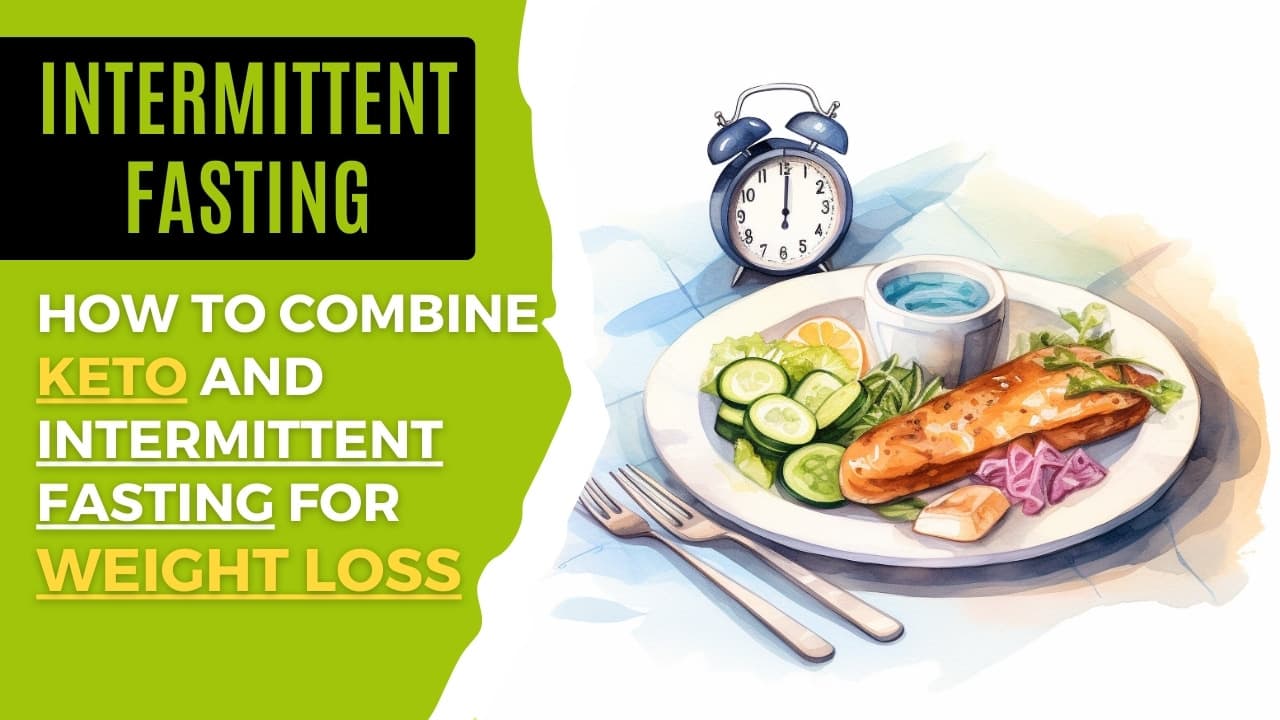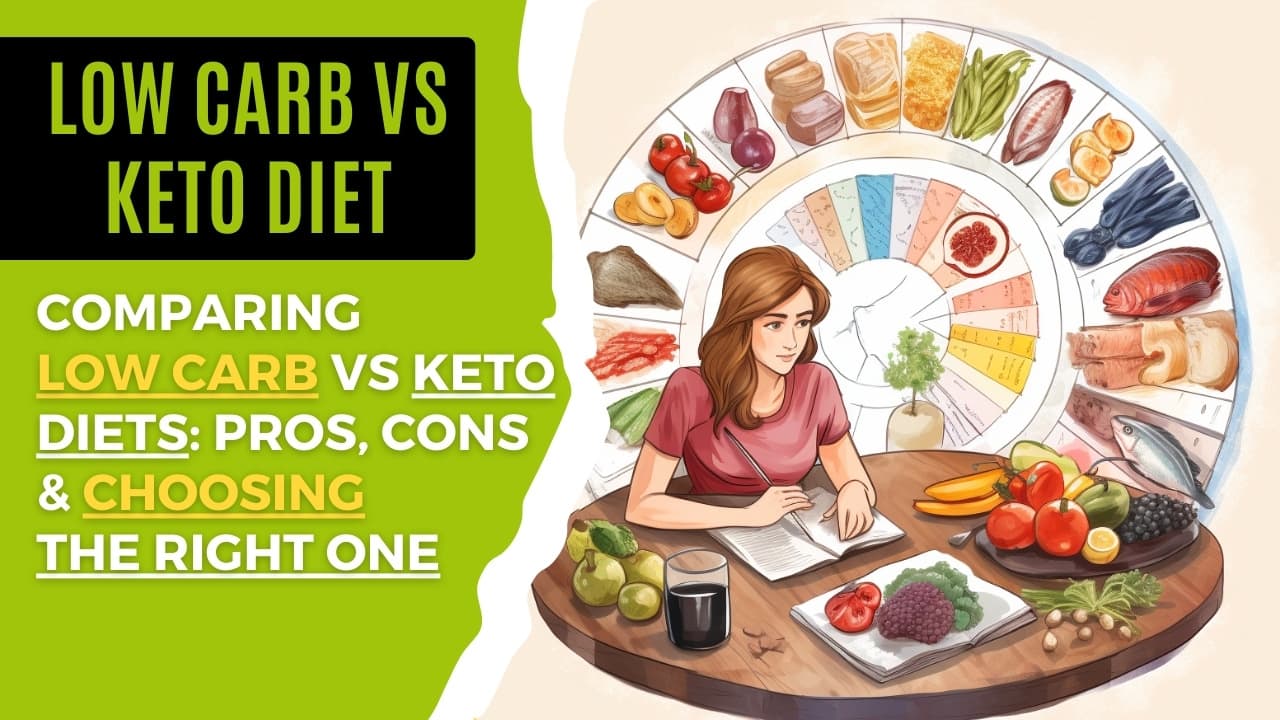
Demystifying the Cyclic Keto: A Comprehensive Guide to the Cyclical Ketogenic Diet

Are you an athlete or fitness enthusiast looking for a ketogenic diet variation that accommodates your active lifestyle? The cyclical ketogenic diet (CKD) might just be the answer you’re seeking. This comprehensive guide will walk you through the ins and outs of cyclic keto, showing you how to optimize your nutrition and exercise performance while reaping the benefits of a ketogenic lifestyle.
Key Takeaways
The Cyclical Ketogenic Diet (CKD) combines the fat-burning benefits of a low-carb, high-fat ketogenic diet with the energy-boosting effects of carbohydrates.
Cyclic Keto offers enhanced exercise performance, improved gut health and optimized weight management when nutrient sources are carefully selected and macros tracked.
Potential challenges such as water retention, tiredness and cravings can be managed to reap the full benefits of cyclic keto.
Understanding the Cyclical Ketogenic Diet (CKD)

The keto cycle diet, also known as the cyclical keto diet, is a fascinating twist on the standard ketogenic diet. It involves alternating between a stringent high-fat, low-carbohydrate ketogenic diet and a higher carbohydrate intake, primarily aimed at athletes and highly active individuals who require more carbs for optimal performance. In essence, the keto cycle diet combines the best of both worlds: the fat-burning benefits of ketosis and the energy-boosting effects of carbs to fuel high-intensity workouts and promote muscle growth.
This unique approach to keto, also known as carb cycling, revolves around the concept of cycling between low-carb and high-carb days. The cyclical ketogenic diet (CKD) typically consists of 5-6 days of low-carb eating to achieve ketosis, followed by 1-2 days of high-carb consumption to replenish glycogen stores. This way, the body can maintain a state of ketosis during low-carb days while still having access to the necessary carbs for intense physical activity on high-carb days.
The Ketosis Cycle
The cornerstone of the cyclical ketogenic diet is the ketosis cycle. As mentioned earlier, this cycle involves 5-6 days of low-carb eating to achieve ketosis, followed by 1-2 days of high-carb consumption to restore glycogen stores. The objective of these high-carb days, often referred to as carb refeeding days, is to provide the body with the necessary glucose to replenish depleted glycogen stores in the liver and muscles, ensuring optimal exercise performance.
On low-carb days, prioritize the intake of healthy fats, proteins, and low-carb vegetables, much like a standard ketogenic diet. High-carb days should be filled with nutrient-dense complex carbohydrates like sweet potatoes, chickpeas, beets, and grains to replenish glycogen stores effectively. By following this cycle, individuals on a cyclical ketogenic diet can enjoy the benefits of ketosis while also fueling their bodies with the necessary carbs for high-intensity workouts and muscle growth. This approach makes the cyclical ketogenic diet a suitable option for those looking to follow a low carbohydrate diet without compromising their athletic performance.
Transitioning to Cyclic Keto

Before embarking on your cyclic keto journey, it’s necessary to become fat-adapted initially. This means undergoing a standard ketogenic diet for a period of one month to teach your body how to burn fat efficiently for fuel. This initial phase is essentially the same as transitioning into a ‘regular’ keto diet, with a focus on reducing carb intake and increasing healthy fat consumption.
During this transitional phase, some individuals may experience uncomfortable symptoms, commonly known as the “keto flu”. This includes brain fog, nausea, diarrhea, constipation, and aches and pains, all due to the depletion of liver and muscle glycogen levels. Thankfully, these symptoms can be managed by consuming ample amounts of water, augmenting salt intake, and integrating bone broth into one’s diet. Additionally, the metallic taste in the mouth during keto, commonly referred to as “keto breath,” is an indication that the body has entered ketosis.
Once your body is fat-adapted and burning fat efficiently for fuel, you can start incorporating carb refeeding days into your routine. This marks the beginning of your journey with the cyclical ketogenic diet, allowing you to enjoy the benefits of ketosis while also fueling your body with the necessary carbs for high-intensity workouts and muscle growth.
Cyclic Keto vs. Standard Keto: Key Differences

At first glance, cyclic keto and standard keto may seem similar, but there are key differences between these two dietary approaches. The primary distinctions involve carb intake, the degree of flexibility in food choices, and the potential advantages for athletic performance and thyroid function.
The most significant difference between cyclic and standard keto lies in carb intake. While a standard keto diet requires consistently low carb consumption, the cyclical keto diet entails following a standard ketogenic diet protocol for 5-6 days a week, with 1-2 days of increased carb intake. These days of increased carbs, known as “refeeding days,” are intended to replenish depleted glucose reserves, providing the necessary energy for physical activity.
Another notable difference between cyclic and standard keto is the degree of flexibility in food choices. Cyclic keto allows for a greater amount of carbohydrates, incorporating one high-carbohydrate day to reset before reducing carb intake again. This flexibility can be particularly advantageous for athletes and highly active individuals who require more carbs to fuel their workouts and support muscle growth.
Additionally, the occasional carb refeeding may also help maintain healthy thyroid function, as going for prolonged periods without any carbohydrates may signal to the body that it is in a low-energy environment where conservation is necessary.
Benefits of Cyclic Keto

The cyclic keto diet presents several advantages over a standard ketogenic diet, making it an attractive option for athletes and highly active individuals. Some of the key benefits include:
Enhanced exercise performance
Weight management
Improved gut health
Metabolic flexibility
Dietary freedom
The primary advantage of cyclic keto is its potential to improve exercise performance. By providing the benefits of ketosis while also supplying the necessary carbohydrates for intense workouts and muscle development, cyclic keto enables athletes and active individuals to optimize their nutrition and exercise performance. Additionally, the dietary freedom offered by cyclic keto, which allows for occasional carb refeeds, can make it easier to adhere to a low-carb diet in the long term.
Cyclic keto may also contribute to better gut health by allowing for higher carbohydrate intake on refeeding days, which can help maintain a healthy gut microbiome. Moreover, metabolic flexibility – the ability to switch between burning fat and carbohydrates for energy – could be improved through this approach.
Finally, weight management can be optimized as carb refeeds modulate weight loss hormones, particularly leptin, preventing plateaus and supporting sustainable weight loss by helping you lose weight and reducing body fat.
Designing Your Cyclic Keto Meal Plan

Creating a well-designed cyclic keto meal plan is essential to reap the benefits of this dietary approach. A cyclic keto meal plan should include standard keto foods for low-carb days and nutrient-dense, complex carbohydrates for refeeding days.
On low-carb days, focus on consuming healthy fats, proteins, and low-carb vegetables, much like a standard ketogenic diet. High-carb days should be filled with plenty of complex carbohydrates, resembling a high carbohydrate diet. This includes sweet potatoes, chickpeas, beets, butternut squash and grains - all of which help to restore glycogen levels. By carefully selecting nutrient-dense, whole food carbohydrate sources, you can fuel your body with the necessary energy for optimal exercise performance and muscle growth.
Also, it’s vital to monitor your nutrient intake on carb refeeding days to maintain a balanced diet rich in carbohydrates, protein, and fat. This is essential as the aim of carb refeeding is to restore glycogen stores and provide energy for physical activity, while also preventing overeating that can result in weight gain. By tracking your macros and adjusting your refeeding strategy accordingly, you can ensure the best outcome for your cyclic keto journey.
Tips for Effective Carb Refeeding

Following a few key guidelines will help maximize the benefits of carb refeeding on a cyclic keto diet. First, focus on consuming whole food carbs from nutrient-dense sources such as starchy vegetables like potatoes, squash, and yams, properly prepared grains like white rice and quinoa, and whole fruits. These complex carbohydrates will provide the necessary energy for your workouts while also supporting optimal gut health and overall well-being.
Next, avoid inflammatory oils and fats during carb refeeding days. Opt for healthy oils and fats such as:
Canola oil
Soybean oil
Corn oil
Safflower oil
Other unsaturated oils
Abstain from foods that contain inflammatory vegetable oils and hydrogenated fats, as these can impede your ability to return to ketosis and hinder your overall health.
Finally, tracking macros during carb refeeding days is essential for ensuring optimal nutrient intake and preventing overeating. By carefully monitoring your carbohydrate, protein, and fat consumption, you can make adjustments to your refeeding strategy as needed, optimizing your cyclic keto experience and ensuring the best possible outcome for your health and fitness goals.
Getting Back into Ketosis After Carb Refeeding

Getting back into ketosis after carb refeeding is an integral part of the cyclical ketogenic diet. To facilitate a swift return to ketosis, focus on depleting glycogen stores through exercise, intermittent fasting, and reducing carb intake.
Incorporate high-intensity interval training (HIIT), resistance training, and endurance exercises such as running or cycling into your routine to deplete glycogen stores and expedite your return to ketosis. These types of exercise are particularly effective at burning through stored glycogen, allowing your body to switch back to burning fat for fuel.
Intermittent fasting and reducing carb intake can also help accelerate your return to ketosis after carb refeeding. By limiting your eating window and cutting back on carbs, you can encourage your body to burn through its glycogen stores more quickly, facilitating a faster return to ketosis and ensuring that you continue to reap the benefits of the cyclical ketogenic diet.
Cyclic Keto and Exercise Performance

Cyclic keto has the potential to significantly enhance exercise performance for athletes and highly active individuals. By combining the fat-burning benefits of ketosis with the energy-boosting effects of carbohydrates, cyclic keto allows you to optimize your nutrition and exercise performance.
Athletes who undertake intense training or elite athletes may particularly benefit from the addition of carbohydrates to their diet, as well as highly active individuals looking to build muscle. The occasional carb refeeding in cyclic keto ensures that glycogen stores are replenished, providing the necessary energy for high-intensity workouts and supporting muscle growth.
Furthermore, endurance athletes can reap the benefit of “racing high and training low” with a cyclic ketogenic diet. This approach allows them to train in a low-carbohydrate state, improving their ability to burn fat for fuel, while also having access to the necessary carbohydrates for racing and high-intensity training sessions.
Overall, cyclic keto offers a unique and effective way to support optimal exercise performance for athletes and active individuals alike.
Potential Challenges and Downsides of Cyclic Keto

Despite the numerous benefits of cyclic keto, it’s important to acknowledge the potential challenges and downsides that come with this dietary approach. Some individuals may experience:
Water retention
Tiredness
Brain fog
Unhealthy food cravings during the adjustment phase
Additionally, there is limited research on the long-term safety of cyclic keto, which may be a concern for some people.
Another challenge of cyclic keto is the need for careful planning and tracking of nutrient intake to ensure optimal health and fitness outcomes. This can be time-consuming and may require a significant amount of discipline and organization, particularly for those new to the world of ketogenic diets.
However, with the right mindset and commitment to tracking macros, experimenting with food choices, and adjusting as needed, the potential benefits of cyclic keto can far outweigh the challenges. By embracing the learning curve and diligently monitoring your progress, you can successfully navigate the world of cyclic keto and unlock its numerous benefits for your health and fitness journey.
Summary
In conclusion, the cyclical ketogenic diet is a unique and powerful approach to nutrition and exercise performance, particularly for athletes and highly active individuals. By combining the benefits of ketosis with the energy-boosting effects of carbohydrates, cyclic keto enables you to optimize your health, fitness, and overall well-being. While there may be some challenges and downsides, with careful planning, tracking, and commitment, cyclic keto can be a game-changer for those looking to enhance their exercise performance and health.
Frequently Asked Questions
What is the cyclical keto method?
The Cyclical Ketogenic Diet (CKD) involves following a standard ketogenic diet for 5–6 days per week, followed by 1–2 days of higher carb consumption. This method is claimed to reduce keto flu symptoms, boost athletic performance and promote muscle growth.
Can you lose weight on cyclical keto?
Yes, you can lose weight on cyclical keto as it reroutes your metabolism to burn fat instead of carbs and sugar for fuel. The initial weight loss is mostly water weight and other stored glycogen in your body.
Is Cyclical keto good?
Overall, the cyclical keto diet is an effective approach to achieving the benefits of ketosis while allowing for strategic carb intake for improved performance. However, it is important to keep in mind that it should be attempted only by experienced keto dieters.
What is cyclic dieting?
Cyclic Dieting is when you alternate between periods of low calories and high calories, or between periods of low and high carbs.
What is the primary difference between cyclic keto and standard keto?
The primary difference between cyclic keto and standard keto is that cyclic keto includes 1-2 days of increased carb intake (refeeding days) to replenish glycogen stores and provide energy for physical activity, whereas standard keto does not.
Comments (0)
Add comment
Your email address will not be published. Required fields are marked *
You May Also Like

Combining keto and intermittent fasting can be a game-changer for your weight loss journey. Imagine harnessing the power of two proven methods, working in perfect harmony to accelerate your results and improve your overall health. In this blog post, we’ll share our firsthand experience, insights,...

Are you considering a low carb or keto diet to help you achieve your health and weight loss goals? With all the buzz around these diets, it can be challenging to determine which one is right for you. In this blog post, we’ll explore the...




